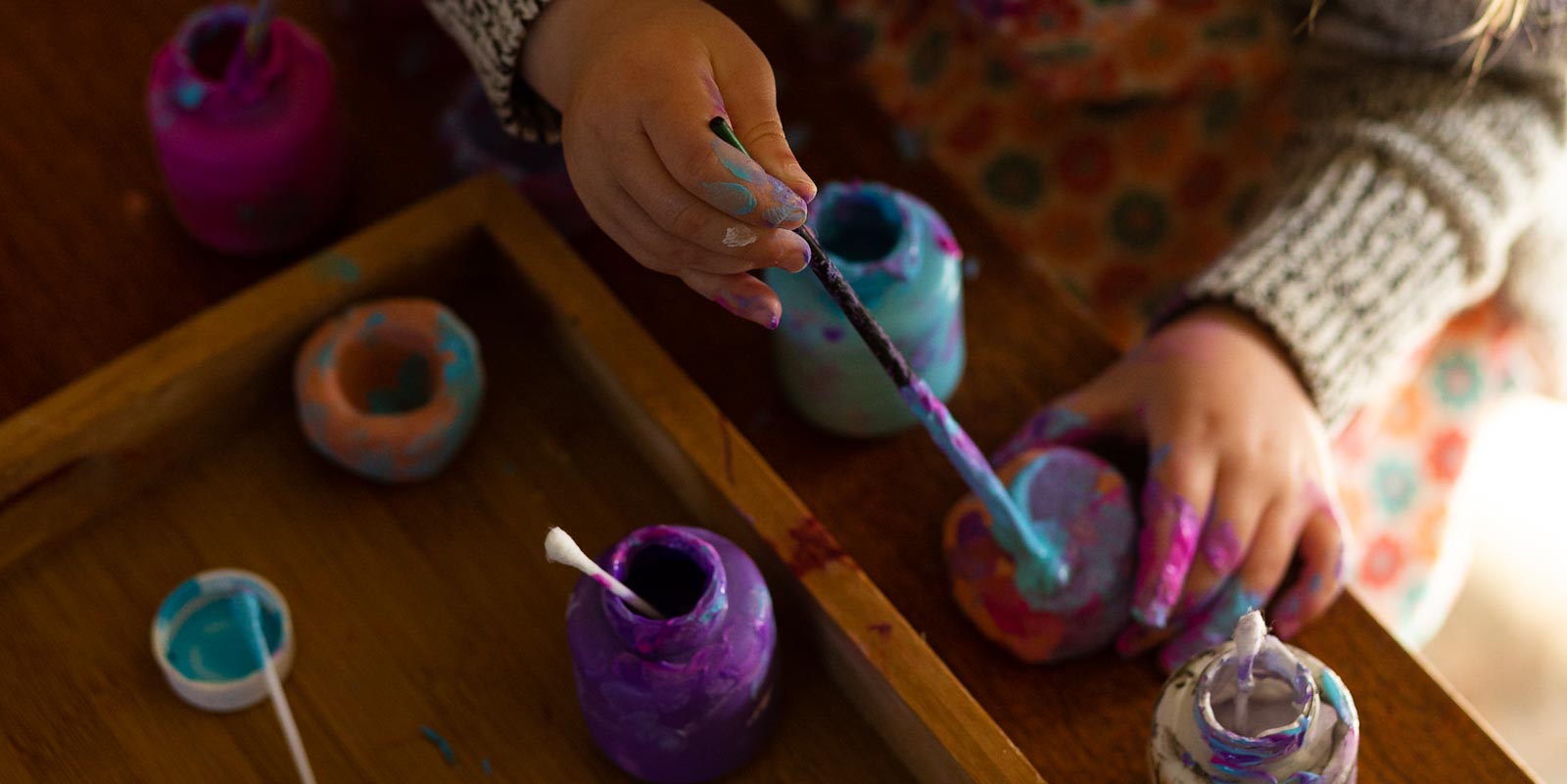
Children are never too young to participate in art and expressive play. Babies may be interested in art for the sensory experience, which is essential for their learning and development. Preschool children may use art for storytelling and communicating big ideas.
EYLF learning outcomes
Art and self-expression align with the Early Years Learning Framework. Children can use a range of media to create art and express themselves (5.3). Self-expression is important for developing a strong identity (1) and social and emotional wellbeing (3.1).
Art is experimental and involves problem solving, inquiry, hypothesising, researching and investigating (4.2). Art promotes commitment, enthusiasm, persistence, curiosity, imagination, creativity and confidence (4.1).
Learning experiences
Explore different types of art
Provide opportunities for children to explore different art forms. This page is dedicated to self-expression and art as a very broad children's interest topic. If you're more interested in a particular type of art, these pages will be helpful:
Combine art forms
Educators can extend a child's interest in one area of art by combining it with another area.
- Mixed media art combines different visual art forms, like painting and drawing.
- Multimedia art incorporates visual and non-visual elements like sculpture and sound.
Segni Mossi is an incredible project combining drawing and dance. Look for ideas on their:
Encourage self-expression
Create opportunities for children to express themselves:
- Encourage children to tell stories and share their emotions about personal experiences.
- Look at fashion pictures. Talk about which garments each child loves and why. Explain that people can express themselves through clothes and it is okay to like different things. Make your own costumes from scraps of fabric or paper.
- Ask children to express their emotions through a painting or a dance. How does anger, sadness or excitement look?
Turn STEM into STEAM
Extend your STEM learning experiences. The A in STEAM stands for art. Read about the difference between STEM and STEAM on The Conversation, and try these learning experiences:
- One child jumps to music for 30 seconds while other children count their jumps.
- Children sing songs or play instruments. They use an audio recorder to record their music which they play back to their families.
- Paint with lemon juice instead of paint and let it dry. The artwork will be invisible until it is placed near the heat of a lightbulb, an iron, or warm sunlight. Experiment with other liquids — like vinegar, orange juice, or milk. Which liquids work best? Which heat sources work best?
- Add STEM tools into your dramatic play area — like measuring tapes, calculators, magnifying glasses and binoculars.
Educator-child interactions
Value children's perspectives
When talking to children about art, either their own work or other people's work, let them take the lead. Instead of explaining an artwork to them, ask what they see and feel.
Encourage children to make guesses about art. Why did the artist choose those materials? Why is the dancer moving like that? Foster curiosity and wonder.
Establish a sense of belonging
Before children can express themselves confidently and appropriately, they need to feel safe and secure with a sense of belonging. Early childhood educators can promote self-expression by establishing a warm and nurturing environment that values and includes each child.
Educator reflections
Am I inclusive?
- Are all children in my group encouraged to express themselves?
- Are children who express themselves in hurtful ways shown alternative methods of self-expression?
Am I an artist?
- As an educator, how do I like to express myself?
- Do I need to be artistic myself to teach art to children?
What is art?
- Is art a form of communication?
- What is more important in art — learning and exploration, or a final product to show someone else?
